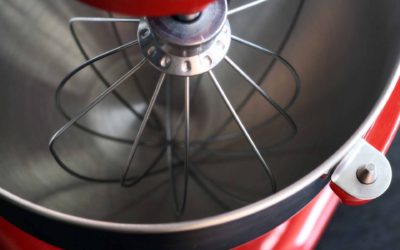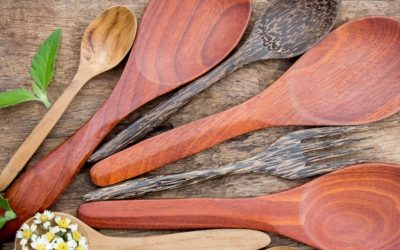Keeping Your Commercial Kitchen Clean
June 20, 2019According to the U.S. Centers for Disease Control and Prevention, one-in-six Americans get sick from consuming contaminated food or beverages every year.
Food poisoning isn’t surprising considering commercial kitchens can serve as a hot spot for germs and bacteria if they aren’t properly maintained. Regardless of whether the kitchen is in a high school cafeteria or a five-star hotel restaurant, ensuring your commercial kitchen is a clean and healthy environment should be a top priority.
Systematic
To operate a successful kitchen, you will need to incorporate a regular cleaning schedule into the day to day running of your business. From everyday tasks to those which can be performed less regularly, your cleaning program will all depend on how often you use your kitchen.
For example, every day you will need to; wipe down the sink and worktops and clean the floor. Whereas cleaning cabinets, appliances, fridges, and other kitchen equipment may need less regular cleaning.
Ensuring you strict daily, weekly, and monthly tasks will help to ensure your cleaning program is adhered too and maintained.
Floors
Given the busyness of the typical commercial kitchen, dirty floors are standard in restaurants. Dropped food can cause germs in the air as small droplets and adversely affect the food’s quality. Employee shoes can track dirt into walk-in freezers, walk-in refrigerators, and food-prep areas, causing cross-contamination. The takeaway? Dirty commercial kitchen floors aren’t just a trip-and-fall hazard; they’re also a threat to public health, as they can harbor organisms that cause food-borne illnesses. Unfortunately, mopping may be insufficient.
So, what does work when it comes to the question of how to clean a greasy restaurant kitchen floor? We recommend a floor cleaning system that scrubs the floor and sucks up all the dirty liquid into a holding tank. While this may seem like an unnecessary expense compared to a mop, it’s an investment in the overall well-being of your restaurant kitchen. An industrial kitchen degreaser is one of the commercial kitchen cleaning supplies that can help remove grease from kitchen floors.
One additional tip: Save cleaning the floors for last to avoid having to do the work again due to debris falling from other surfaces as you wash them.
Clean, Clean, and Cleaner
Kitchen equipment and surfaces need more than just washing. To help ensure that bacteria numbers are reduced to a safe level, it’s essential to sanitize. There are two different ways to disinfect, with a chemical agent or with heat. This takes cleaning one step further and provides long-lasting protection against potential contamination.
Food poisoning occurs when someone consumes unsafe food or drink – often contaminated with harmful bacteria. So how can you keep your commercial kitchen clean and fresh?
First, hands are one of the primary ways in which germs spread. All people working in a position where they touch food should know how to wash their hands properly. Washing includes before and after handling raw food or touching anything that may have been exposed to germs.
Perishable products usually come with “use-by” dates, based on scientific testing. These dates indicate approximately how long items will remain safe for consumption. Following the use-by date, food could be unsafe to eat, even if it looks and smells normal.
It’s essential to make sure that your refrigerator is set below the 41°F if you want to ensure that chilled foods remain chilled to a safe temperature. Keeping foods at the right temperature during periods of storage can ensure that harmful germs are not permitted to grow and multiply. Make sure that commercial fridges do not get overfilled, as there should always be enough room for air to circulate – thereby maintaining the correct temperature.
Apply routines and stay consistent, and your commercial kitchen will thrive in cleanliness and productivity.
5 Keys to Creating the Perfect Restaurant Seating Areas
Restaurants are about so much more than just food. From the setting and layout of your restaurant to your choice of colors, it takes a lot more than an appealing menu to keep diners coming back for more. When setting up your restaurant, booths and chairs are important...
5 Essential Buying Tips for Your Next Food Prep Work Table
The right foodservice equipment is pivotal to the efficiency of your kitchen. One of the most important types of foodservice equipment for any kitchen is the work table. With limited room on countertops available for your food prep needs, the cooking process can drag...
Tips for Keeping Your Commercial Sink Sparkling Clean
Your commercial kitchen, just like your personal kitchen, must be kept clean at all times. With all of the cooking and food processing you do, it is inevitable that your sink gets messy. Cleaning up your commercial kitchen is incomplete without proper cleaning of your...
Food-Cutting Secrets to Beautiful Dishes
In the restaurant industry, presentation is often said to be just as important as the food itself. Using the right knowledge, skills and restaurant supplies, you can incorporate creativity into your presentation, making guests feel that they are getting something...
Top Space-Saving Tips for Commercial Kitchens
Top Space-Saving Tips for Commercial Kitchens Space is always an important consideration when setting up a kitchen, and this is even truer for commercial kitchens. With a strong focus on functionality and the kitchen supplies that meet the needs of your commercial...
5 Ways to Get the Most Out of Your Mixer
No one wants to eat off of dirty or tarnished silverware. A stand mixer is a highly useful piece of kitchen equipment to invest in. Although this type of kitchen equipment does not usually come cheap, it can last a lifetime when properly cared for. Despite all your...
Restaurant Prep Tool Selection Simplified
What’s a restaurant kitchen without high-quality prep tools that can withstand the pressure of frequent use? Whether you already have a restaurant you’re running, or you’re just planning to launch one, one vital factor that could make or mar your business is how you...
Beginner’s Guide to Choosing a Commercial Ice Cream Freezer
Ice cream is a delicious and appealing desert treat for everyone, young or old. Having made the decision to sell ice cream to your customers, whether you have a restaurant, convenience store, or specialty ice cream parlor, it is time to begin stocking up on the right...
How to Choose the Right Kitchen Scales for Your Restaurant
A food scale is an essential item in every restaurant’s store of kitchen supplies. Designed to take the guesswork out of food measurement and maintain consistent food serving sizes, food scales are indispensable kitchen supplies in the commercial kitchen. With such a...
Beer Chilling Systems: Which Type Is Right for My Restaurant?
A refrigeration unit is integral to the functioning of any restaurant. Beers are best served cold - there’s no questioning that! But which beer chilling system is the best? From reach-in coolers to glycol chillers, a beer chilling system is an important piece of...
What Equipment Will I Need to run a Food Truck?
There’s a lot of planning that goes into starting your own food truck business. Before you hit the road with your delicious food offerings, you’ll need to fill up your truck with all the right foodservice equipment. Considering the lengthy list of possible items to be...
8 Types of Food Thermometers: What You Need To Know
Food thermometers are essential restaurant supplies for your commercial kitchen. They ensure that foods prepared in your commercial kitchen are cooked to the right temperature and held at that temperature for as long as necessary to kill any harmful bacteria. This...
How to Identify the Best Food Processor for Your Needs
Highly versatile and extremely efficient, food processors are designed to take away the hard work from repetitive kitchen activities. This type of cooking equipment can quickly become an invaluable tool in your kitchen. From chopping, to shredding, grinding, mincing,...
6 Keys to Choosing the Best Chafing Dishes for Your Restaurant
The chafing dish, also known as the chafer, is an essential piece of restaurant equipment for any establishment that wants to keep food hot. This type of restaurant equipment gets its name from the French word, chauffer, which means to heat, and it’s easy to see why....
Turning up the Dial on Commercial Fryers: How to Choose One for Your Restaurant
Fried food is a well-loved favorite. This is a fact. It also makes a fryer an important piece of equipment to have in your commercial kitchen. Just consider how many appetizers and sides require frying: onion rings, French fries, and fried green tomatoes are just a...















